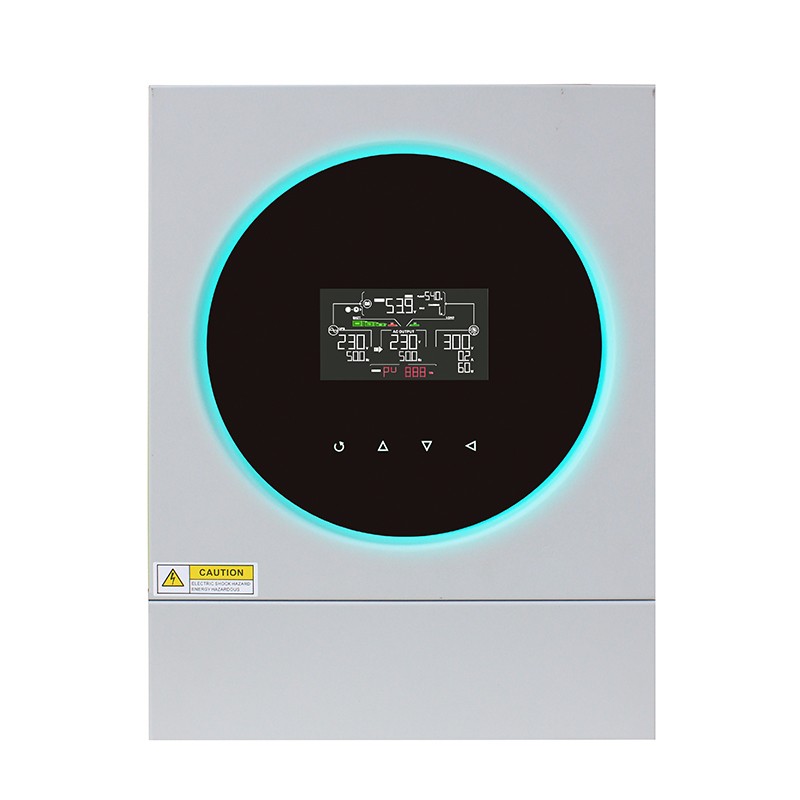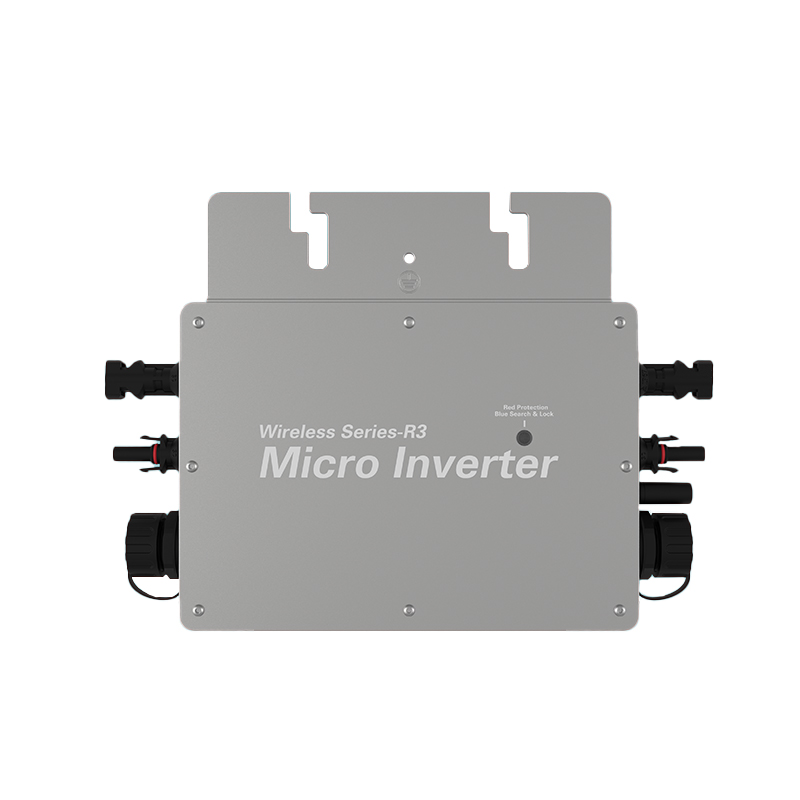
6 solar inverter types
By xy | Industry News
Solar Inverter Types can be divided into many types, which are available for solar and energy storage systems. In this article, we list the 6 most common types of inverter used for rooftop solar.
Solar inverter Types - String Solar Inverters
This review is focused on common ‘string’ solar inverters which are the most popular type of solar inverter. These inverters are connected to a string of solar panels linked together in series. String inverters are the most common type of inverter used in the UK, Europe, Australia, & Asia, and are growing in popularity in the US where micro inverters are very popular.
The string inverter is a medium power inverter that is usually connected in series with a set of solar photovoltaic panels. These inverters convert DC power from the entire photovoltaic array into AC power. It is suitable for smaller solar systems such as home and small commercial applications. It is usually relatively inexpensive and easy to install and maintain. However, It is affected by the weakest panels, and if one of the panels is affected by shading or failure, the performance of the entire system may degrade.
Solar Inverter Types - Hybrid Inverters
Hybrid inverters sometimes referred to as battery-ready inverters, are similar to string solar inverters but enable the direct connection of a battery storage system to allow greater self-sufficiency using solar. Most hybrid inverters also provide a basic level of backup power in the event of a blackout but are generally not designed for continuous off-grid use. While more expensive, hybrid inverters are becoming more cost-competitive against solar inverters as hybrid inverter technology advances and batteries become cheaper and more appealing.
Hybrid inverters perform the dual function of converting DC power from solar photovoltaic panels into usable AC power while also storing excess power in batteries. When solar panels produce more power than a home or business needs, a hybrid inverter channels the excess power into an energy storage battery for backup. With batteries storing power, a hybrid inverter can also continue to power a home or commercial building when the grid is out, providing backup power. Features of Hybrid inverters are Self-powering and self-consumption, Backup power supply, Smart Control, Energy Savings and Lower Electricity Bills, and Environmentally friendly.
Solar Inverter Types - Off-grid Inverters
Off-grid or stand-alone power systems generally require much more powerful battery inverters with inbuilt chargers, which can be set up as either AC or DC-coupled solar systems. Modern, flexible off-grid inverter-chargers, also known as multi-mode inverters, can also be used to create advanced hybrid grid-connected systems.
Small-scale and DIY off-grid systems use simple MPPT solar charge controllers, also known as solar regulators. These are not inverters, but DC solar battery chargers connected between the solar panel/s and battery to regulate the battery charging process and ensure the battery is charged correctly, or more importantly, not over-charged.

Solar Inverter Types - Micro Inverters
Micro inverters, also known as micros are very small solar inverters attached directly to individual solar panels. Since each microinverter and panel operate independently, they are a great option for complex roof layouts and locations with shading. Despite the slightly higher cost, micros are very popular in North America due to Enphase’s strong presence and they are becoming more popular around the world due to the several advantages they offer over string solar inverters.
Features of micro-inverters are Individual connections, MPPT functionality, Modular, Monitoring and data collection, Reliability, and Safety. They are suitable for solar installations of all sizes, from small home systems to large commercial and industrial solar plants.
Solar Inverter Types - Central Inverter
Working principle: Centralized inverters are suitable for large solar power stations. They concentrate the DC power of the entire photovoltaic array into a single inverter for conversion. This means that the entire solar plant’s electricity passes through a central inverter.
Features: Centralized inverters usually have higher power handling capabilities and are suitable for large-scale power generation systems. They generally have a longer life and lower maintenance costs. However, the failure of a single inverter may affect the overall system capacity.
Solar Inverter Types - Battery-based inverter
How it works: An energy storage inverter is a special type of inverter designed to be used in conjunction with a solar system and an energy storage battery system. They convert DC power generated by solar panels into AC power that can be used and stored. This allows excess electrical energy to be stored in the battery for backup.
Features: Energy storage inverters are very useful for optimizing self-consumption and achieving continuous power supply from solar power. They also provide backup power in the event of a grid outage. These inverters are commonly used in residential and commercial applications to increase energy self-sufficiency.
Tags
Industry News
Solar Inverter Types can be divided into many types, which are available for solar and energy storage systems. In this article, we list the 6 most common types of inverter used for rooftop solar.
Solar inverter Types - String Solar Inverters
This review is focused on common ‘string’ solar inverters which are the most popular type of solar inverter. These inverters are connected to a string of solar panels linked together in series. String inverters are the most common type of inverter used in the UK, Europe, Australia, & Asia, and are growing in popularity in the US where micro inverters are very popular.
The string inverter is a medium power inverter that is usually connected in series with a set of solar photovoltaic panels. These inverters convert DC power from the entire photovoltaic array into AC power. It is suitable for smaller solar systems such as home and small commercial applications. It is usually relatively inexpensive and easy to install and maintain. However, It is affected by the weakest panels, and if one of the panels is affected by shading or failure, the performance of the entire system may degrade.
Solar Inverter Types - Hybrid Inverters
Hybrid inverters sometimes referred to as battery-ready inverters, are similar to string solar inverters but enable the direct connection of a battery storage system to allow greater self-sufficiency using solar. Most hybrid inverters also provide a basic level of backup power in the event of a blackout but are generally not designed for continuous off-grid use. While more expensive, hybrid inverters are becoming more cost-competitive against solar inverters as hybrid inverter technology advances and batteries become cheaper and more appealing.
Hybrid inverters perform the dual function of converting DC power from solar photovoltaic panels into usable AC power while also storing excess power in batteries. When solar panels produce more power than a home or business needs, a hybrid inverter channels the excess power into an energy storage battery for backup. With batteries storing power, a hybrid inverter can also continue to power a home or commercial building when the grid is out, providing backup power. Features of Hybrid inverters are Self-powering and self-consumption, Backup power supply, Smart Control, Energy Savings and Lower Electricity Bills, and Environmentally friendly.
Solar Inverter Types - Off-grid Inverters
Off-grid or stand-alone power systems generally require much more powerful battery inverters with inbuilt chargers, which can be set up as either AC or DC-coupled solar systems. Modern, flexible off-grid inverter-chargers, also known as multi-mode inverters, can also be used to create advanced hybrid grid-connected systems.
Small-scale and DIY off-grid systems use simple MPPT solar charge controllers, also known as solar regulators. These are not inverters, but DC solar battery chargers connected between the solar panel/s and battery to regulate the battery charging process and ensure the battery is charged correctly, or more importantly, not over-charged.

Solar Inverter Types - Micro Inverters
Micro inverters, also known as micros are very small solar inverters attached directly to individual solar panels. Since each microinverter and panel operate independently, they are a great option for complex roof layouts and locations with shading. Despite the slightly higher cost, micros are very popular in North America due to Enphase’s strong presence and they are becoming more popular around the world due to the several advantages they offer over string solar inverters.
Features of micro-inverters are Individual connections, MPPT functionality, Modular, Monitoring and data collection, Reliability, and Safety. They are suitable for solar installations of all sizes, from small home systems to large commercial and industrial solar plants.
Solar Inverter Types - Central Inverter
Working principle: Centralized inverters are suitable for large solar power stations. They concentrate the DC power of the entire photovoltaic array into a single inverter for conversion. This means that the entire solar plant’s electricity passes through a central inverter.
Features: Centralized inverters usually have higher power handling capabilities and are suitable for large-scale power generation systems. They generally have a longer life and lower maintenance costs. However, the failure of a single inverter may affect the overall system capacity.
Solar Inverter Types - Battery-based inverter
How it works: An energy storage inverter is a special type of inverter designed to be used in conjunction with a solar system and an energy storage battery system. They convert DC power generated by solar panels into AC power that can be used and stored. This allows excess electrical energy to be stored in the battery for backup.
Features: Energy storage inverters are very useful for optimizing self-consumption and achieving continuous power supply from solar power. They also provide backup power in the event of a grid outage. These inverters are commonly used in residential and commercial applications to increase energy self-sufficiency.





